Troubleshoot Common Hot Tub Issues: DIY Solutions for Homeowners
December 13th, 2024
December 13th, 2024
Stepping into a steaming hot tub at the end of a long day is one of life's simple pleasures. The soothing warmth, gentle bubbles, and tranquil atmosphere can melt away stress and revive weary muscles. Yet, like any cherished luxury, hot tubs can occasionally present challenges that disrupt this oasis of relaxation. From strange noises to an unexpected chill in the water, these issues can turn your at-home spa experience into a puzzling conundrum.
When my own hot tub decided to play tricks on me by not heating properly, I found myself knee-deep in troubleshooting guides and forums. It became clear that many homeowners share similar frustrations, grappling with unexpected malfunctions. Common problems range from murky water to elusive leaks, each demanding a different approach to restore the tub’s former glory.
Understanding these issues not only saves time and money but also extends the life of your beloved retreat. Before calling in a professional, which often comes with hefty fees, there are practical solutions you can try at home. Through this guide, you'll learn to unravel the mysteries behind six typical hot tub issues, armed with both expert advice and hands-on tips. Whether you're a seasoned hot tub owner or a new enthusiast, navigating these challenges will enhance your enjoyment and mastery of your personal sanctuary.
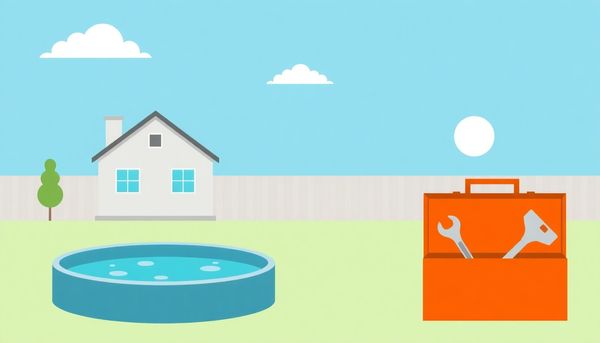
When your hot tub refuses to cooperate, the annoyance is real. Electrical problems top the list of confounding issues, and yet, they can be surprisingly simple to diagnose. Think of your hot tub's electrical system as its nervous system—it governs everything from heat to jets. A key tool to have in your troubleshooting kit is a multimeter, an unsung hero for detecting electrical faults.
Start by examining the circuit breaker. Frequent tripping could indicate an underlying issue, such as moisture intrusion or a faulty component. Before diving deeper, ensure all connections are dry and secure. If the breaker is still tripping, isolate the problem by unplugging the pump, heater, and any other electrical attachments. Then, gradually reconnect each device, flipping the breaker after each one. This process helps pinpoint the exact component at fault.
While inspecting wires, look for signs of wear or corrosion. A damaged or loose wire might just be the offender. If you're adept at electrical work, you can replace these parts; otherwise, professional assistance may be necessary. Heating elements, notorious for causing electrical hiccups, have a finite lifespan. To test them, disconnect the power and use your multimeter to check for continuity.
In my own experience, a simple reset of the high limit switch resolved a persistent issue. It turned out to be a safety shut-off due to overheating—an easy fix once understood. Remember, when it comes to hot tub electrics, patience is golden. But if in doubt, consulting an expert can save more than just frustration.
Discovering your hot tub water is cold can be like finding out your favorite restaurant is closed when you’re starving. It’s frustrating, but before you throw in the towel, there are a few things you can check to bring the heat back.
Start simple. Ensure your water level is adequate—too low can lead to inadequate heating. Next, inspect the filter. A clogged filter can compromise water circulation, affecting the heating process. Remove, clean, or replace it if necessary. Sometimes, the issue is as straightforward as a tripped breaker or a heater’s reset button needing a swift push. If the high limit switch has been activated due to overheating or air in the lines, resetting it could solve your problem.
Had a recent refill? Airlock might be your culprit, preventing water from circulating properly and staying warm. To fix this, turn on the jets to push the air out or loosen a fitting on your pump until air escapes.
Persistent issues may indicate a faulty heating element. If you’re comfortable, check if it’s visibly burnt or damaged. Otherwise, it’s best to call in a professional. Lastly, erratic water temperatures might point to faulty sensors or a thermostat in need of replacement. Troubleshooting these with precision can ensure your hot tub is always ready to welcome you with warmth.
The thrill of sinking into a hot tub, only to find the jets unresponsive, can be a real mood breaker. Jets, after all, are the heartbeat of any spa experience. If your hot tub jets refuse to cooperate, simple steps may restore your relaxation haven without the need for a costly technician.
Start with the basics: ensure your jets are fully open. It might sound trivial, but sometimes they accidentally get turned off. Next, free the jets of any debris or calcium deposits—an old toothbrush can work wonders here. Make sure your water level is adequate and your filter is clean. A dirty filter can obstruct water flow, leaving your jets sputtering rather than surging.
If these steps don't revive your jets, consider airlock as a suspect, especially if you recently refilled your tub. To release trapped air, you can cycle your jets on and off a few times. Alternatively, gently loosen the pump's top fitting until air escapes and water trickles out. Just remember to tighten it afterward to maintain water flow.
Avoid using a plunger, despite any well-meaning advice. The force can damage the plumbing system, leading to more extensive repairs. Should these DIY fixes fall short, professional help might be necessary. Yet, by tackling these common culprits first, you may just save your evening—and your wallet—from unnecessary stress.
Breaker trips can swiftly transform a serene soak into a puzzling predicament. There's nothing like flipping the switch for your hot tub, only to have the breaker immediately kick back off—a clear signal that something isn't quite right. Start by taking a deep breath and remembering that although this issue can seem daunting, it’s often a straightforward fix.
Begin by ensuring you're observing all safety precautions. Turn off the power before you start tinkering with any electrical components. Once safe, unplug everything: the pump, heater, blower, and ozonator. Next, reset your breaker. If it stays on, plug in each component one by one, resetting the breaker each time. The component that causes the breaker to trip is likely your culprit.
Moisture might be sneaking into places it shouldn’t be. Check for water around the breaker box. If rain or splashout is the cause, you may need to relocate your box or add a protective barrier. Corrosion is another common culprit. Examine wiring and connections for signs of rust or damage. Sometimes, a gentle tug or a good look with a flashlight is all it takes to spot a problem.
Don’t forget to inspect the heating element. These tend to wear out and could be the reason your breaker can’t handle the load. If you suspect this is the issue, test the component with a multimeter or look for visible signs of damage. Safety should always be your primary concern, so if you’re unsure, enlist the help of a professional.
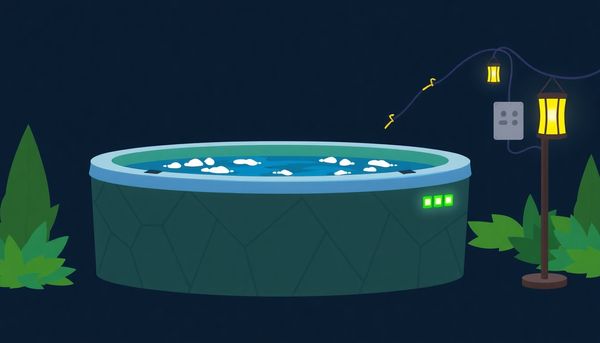
The tranquility of a hot tub session can quickly dissolve into frustration when those jets stop behaving. Jets are the heartbeat of your spa experience, transforming still water into a revitalizing massage. So when they fail to deliver, it can be a real disappointment. Before spiraling into despair, take a moment to assess the situation calmly.
First, ensure the jets are fully open by twisting them counterclockwise. It sounds simple, but sometimes the knobs get accidentally turned off. Next, examine the jets for any obstructions, such as calcium buildup, which can often be dislodged with a gentle brush or some vinegar solution. Don’t forget to check the water level while you’re at it—if it's too low, the jets can’t operate effectively.
If your hot tub was recently refilled, airlock might be the culprit. This occurs when air becomes trapped in the plumbing, stalling water flow. A simple trick is to turn the jets on and off a few times to release the trapped air. Alternatively, you can loosen the top fitting on the pump until air escapes and water starts to drip, then tighten it back.
Avoid using a plunger on your jets. While tempting, the force can damage the system, leading to costly repairs and potential warranty issues. Keeping your jets clean with regular maintenance can prevent these hiccups. However, if these DIY solutions fall short, it might be time to call in a professional to ensure your spa returns to its bubbling glory without lasting damage.
The allure of a hot tub is undeniable: it promises warmth and relaxation. So, encountering cold water can be a real mood dampener. Let’s tackle this issue head-on, with a bit of insight and a dash of personal experience.
Start with the basics—check the water level. Low water can inhibit proper heating, so top it off if necessary. Ensure your filters are clean and free of debris. I once faced a similar issue, and a simple filter rinse restored the heat to my hot tub in no time. Often overlooked, filters can become clogged, impeding water flow and heat distribution.
Next, consider your heater’s breaker. Sometimes all it needs is a reset. Flip the switch off and on; this can resolve minor glitches caused by power surges or interruptions. If you’ve recently changed the water, airlocks can be the culprit. Trapped air in the plumbing lines prevents proper water circulation, which keeps the heater from functioning. Loosening the pump's top fitting slightly until air escapes can often resolve this.
Should these steps not suffice, delve deeper. Inspect the heating element for signs of wear—burnt spots often indicate it's time for a replacement. While I managed a DIY fix once, remember that electrical components can be tricky, and calling a professional might save time and prevent further frustration.
Lastly, keep an eye on the thermostat and sensors. Malfunctioning components can mislead your hot tub into believing it's warmer than it is. Troubleshooting cold water issues may seem daunting, but with patience and the right steps, you'll soon be back in your warm, bubbling oasis.
The anticipation of sinking into a hot tub with water swirling around you is unmatched. But when those jets suddenly refuse to cooperate, it can turn your relaxation plans upside down. A lack of jet flow can often be traced back to some straightforward issues that you might resolve on your own without much hassle.
First, consider whether the jets are simply closed. Sometimes, rotating them slightly can open them up, allowing water to flow freely. It's also worth checking for any blockages. Debris like calcium buildup or dirt can clog the jets, restricting the soothing water flow. A good scrub or a specialized cleaning solution can often do the trick. Similarly, low water levels can disrupt jet functionality, so make sure the water is topped up adequately.
If you've recently refilled your tub, airlock might be the culprit. This occurs when air gets trapped in the plumbing. Turning the jets on and off several times can push the air out. Alternatively, loosening the top fitting on the pump until air escapes might help. Just remember to tighten it again promptly to prevent leaks.
In some cases, a more insidious issue might be at play, such as a malfunctioning pump or faulty wiring. While some might attempt a DIY fix, it's essential to weigh the risks. When in doubt, it's wise to seek professional help, ensuring your sanctuary of bubbles remains your personal paradise without becoming an unexpected headache.
In the world of hot tub enjoyment, a tripping breaker can quickly transform a soothing evening into a frustrating puzzle. You step outside, envisioning the warm embrace of your spa, only to face the abrupt silence of a powered-down tub. The ground fault circuit interrupter (GFCI) breaker is there for your safety, but when it trips unexpectedly, it usually indicates an issue that requires attention.
First, ensure the area around your breaker box is dry. Moisture can trigger a GFCI trip, especially if splashout from the tub or rain has seeped into the system. If your breaker is dry but continues to trip, unplug components like the pump, heater, blower, and ozonator, then reset the breaker. Should it remain stable without the components connected, reconnect each item individually to isolate the faulty part. Often, a worn-out heater element is a prime suspect, as it can short out and cause the breaker to trip.
Sometimes, corrosion or loose connections may also be the culprit. Inspect all wiring with a flashlight for any signs of damage or oxidation. If you’re not familiar with electrical systems, it’s wise to bring in a professional to avoid potential hazards. Remember, a little DIY investigation can save significant time and cost, but safety should always come first. Whether the fix requires a simple wire replacement or a new component, resolving this issue will bring you back to blissful warmth in no time.
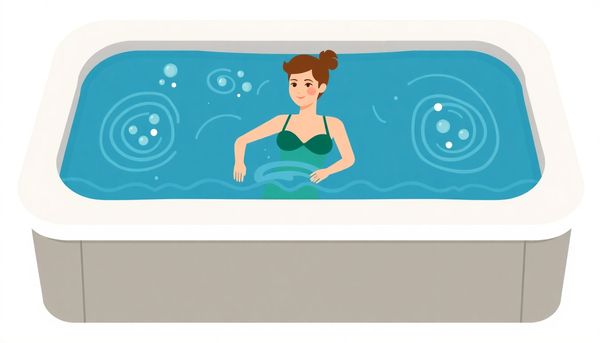
Nothing quite ruins a relaxing soak like the unwelcome discovery of an ice-cold hot tub. When faced with heating failures, the first step is not to despair but to systematically figure out what's going wrong. Begin with the basics: ensure your water level is up to the mark and filters are clean. Even mundane tasks like these can sometimes solve the problem outright, saving you time and frustration.
Moving on, the heater might be the next suspect. Sometimes, simply resetting your heater or flipping the breaker can breathe life back into your spa. If your hot tub was recently refilled, you might be dealing with an airlock—a pesky situation where air trapped in the plumbing prevents water from circulating and heating. Releasing this air can often be accomplished by briefly loosening the pump’s top fitting until water starts to trickle out.
In other instances, deeper issues like a malfunctioning thermostat or high limit sensor might be at play. These components regulate the heater, ensuring it kicks in when needed. If they're not functioning correctly, your water won't maintain a stable temperature. A multimeter can be an invaluable tool in diagnosing these electrical components. And while it's tempting to tackle these fixes solo, don’t hesitate to call in a professional if things get complex. Proper maintenance and timely interventions can make sure your hot tub remains the steamy retreat you deserve.
Encountering cold water in your hot tub when you're eager for a soak can be a real disappointment. The hunt for a solution begins with understanding whether your water never heats up at all or if it warms slightly only to cool off again. Don’t let the cold water dampen your spirits; often, the issue is easier to resolve than it seems.
Start by ensuring your water level is adequate, as low water can hinder proper heating. Next, turn your attention to the filter. A clogged or dirty filter can restrict water flow, which in turn affects heating efficiency. Cleaning or replacing it might resolve the problem swiftly. If the water remains icy, try resetting your hot tub's heater. Find the reset button or toggle the heater breaker. This simple reset can often kick your heater back into action, especially if it was previously shut down due to overheating or trapped air.
Should these steps not restore the warmth, the issue may lie deeper within the system. Airlocks, common after a water refill, can block water circulation. To tackle this, release the trapped air by opening the air bleed valve on your pump until you hear a hissing sound and see a leak of water. Finally, if the heating element is suspected to be faulty, it might be time to consult a professional. While DIY can save time, sometimes a skilled technician is necessary to safely and effectively resolve the issue.
In the realm of hot tubs, few situations can dampen the mood quite like malfunctioning jets. Without the soothing and therapeutic flow of water, your spa experience falls short. If your hot tub jets aren’t firing on all cylinders, there are a few straightforward checks you can perform to restore their vigor.
First things first, ensure that each jet is fully open. It may sound simple, but jets can inadvertently be closed or partially shut, disrupting water flow. If opening them doesn’t solve the issue, inspect for calcium buildup or debris blockages. Mineral deposits can form over time, especially in areas with hard water, turning your jets into uncooperative nozzles. A good clean might be all they need.
Do you recall the last time you replaced or rinsed your filter? A clogged filter can significantly impede water flow. It’s a bit like trying to drink a smoothie through a straw stuffed with cereal—just not going to happen smoothly. Remove and clean the filter to see if that boosts your jet performance.
Perhaps you’ve recently refilled your hot tub. Airlocks often occur when air gets trapped in the plumbing, restricting water circulation. A simple trick is to turn the jets on and off a few times, potentially freeing the trapped air. Another approach is loosening the top pump fitting until you hear a hiss of escaping air, then quickly tighten it again.
Bear in mind, some fixes are best left to the experts. Avoid using tools like plungers on jets; the aggressive pressure can damage your system and void your warranty. If troubleshooting proves fruitless, consulting a professional ensures your hot tub jets are restored without unnecessary risks.
Tackling electrical issues in your hot tub can feel intimidating, but with the right precautions, it becomes a manageable task. Let me share a bit about my own experience. One summer evening, I was all set for a relaxing soak, only to have the hot tub trip the breaker every time I turned it on. A little investigation revealed a problem with the heater element.
Begin by ensuring your safety: always switch off the power at the breaker box before you touch anything. No exceptions here. You don’t want your spa day turning into a shocking experience, literally. With your multimeter in hand, start by isolating the issue. Unplug components like the pump, heater, and ozonator. Flip the breaker back on. If it trips with nothing plugged in, the breaker itself might need replacing. If it stays on, plug each component back one at a time to pinpoint the faulty part.
During my ordeal, the multimeter was invaluable, helping me confirm the heater element had indeed shorted. This small tool can check continuity and voltage, so make it your trusty sidekick.
Inspect for corrosion or loose connections as well. Damp environments can deteriorate wiring over time. Shine a flashlight into the nooks and crannies for a thorough check.
Remember, if the problem seems too daunting or you’re not confident dealing with electricity, it’s wise to call in a professional. Your safety is paramount, and sometimes a little help can get you back to enjoying warm, bubbly bliss sooner.
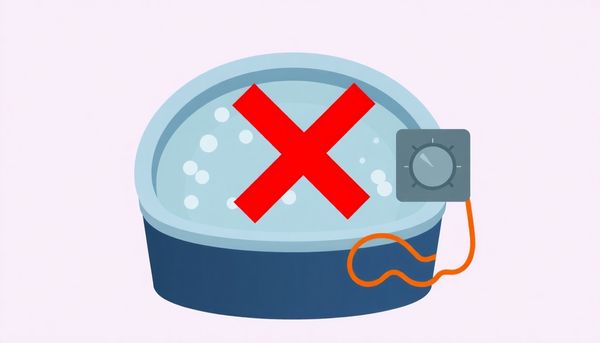
Airlocks in a hot tub can be as unwelcome as a cold swim on a winter's morning. When water refuses to circulate, leaving you without those soothing bubbles, it’s likely that air is blocking the system. Though it sounds daunting, clearing an airlock is often straightforward.
Start by checking the water level; low water can easily lead to air entering the lines. If topping off the water doesn't help, the next step involves a little hands-on intervention. Locate the pump, which usually has a bleed screw, and carefully loosen it. You might hear a hiss as trapped air escapes, and with a little luck, water will follow. Once you see a steady stream of water, tighten the screw back up, preventing any further leaks. This simple release of pressure can often solve the problem.
For stubborn airlocks, another method involves turning the jets on and off several times. This can help dislodge trapped air by forcing it out through sheer pressure. While this might seem repetitive, persistence often pays off without the need for professional assistance.
When all else fails, you might check the pump’s fittings, ensuring they're snug. A slight loosening can sometimes provide the space needed for air to escape more freely. Remember, safety first: always power off the tub before attempting these fixes. By tackling airlocks promptly, you’ll ensure your hot tub is ready to offer relaxation whenever you need it.
Nodding your head in anticipation of a relaxing soak, only to be greeted by a chilly hot tub, is a disappointment many spa owners know too well. The journey to restore warmth doesn't have to be complex, though. Begin with the basics: ensure your water level is adequate and check for any blockages in the circulation system. Filters often go unnoticed, yet a clogged filter can be the silent culprit keeping your tub cold. A simple cleaning or replacement might just do the trick.
In the heart of the problem, your heater might need a gentle nudge. Flicking off the heater breaker and then back on, or pressing the reset button, could revive your hot tub's warmth. Sometimes, trapped air creates an airlock, especially post-refill. By loosening the top fitting on the pump until you hear a hiss of escaping air, you're well on your way to warmth.
However, if the warmth still eludes you, the heater element may be burnt out. Confident DIYers can inspect this themselves, but if you're hesitant, don't shy away from calling an expert. Another possibility is malfunctioning sensors or a faulty thermostat, both of which can disrupt the heat regulation. Should you feel out of your depth, scheduling a professional assessment is a wise choice. Remember, a warm soak is just a few checks away.
You've settled into your hot tub, anticipating that soothing jet massage, but all you get is silence. The jets—those crucial components that turn a tub of warm water into a rejuvenating spa—aren’t cooperating. Don't let frustration bubble over; addressing jet flow issues can often be simpler than anticipated.
Begin by ensuring all your jets are turned fully open. It might sound trivial, but jets can adjust independently, and sometimes they’re just inadvertently closed. Each jet should be examined for obstructions like calcium deposits, which can restrict flow. If you find buildup, a gentle scrub with a non-abrasive cleaner can do wonders.
Water level plays a pivotal role in jet function. Too low, and your pump may not have enough water to work with. Top it up and monitor if the jets spring back to life. Following that, give your filter some attention. A clogged filter can strangle water flow, preventing it from reaching the jets with proper force. A thorough rinse can often restore its efficiency, but if it seems worn, replacement might be necessary.
If you recently refilled your hot tub, airlock could be the culprit. Air pockets trapped in the system halt water flow. Powering your jets on and off may help purge the air. If the problem persists, try loosening the top fitting on your pump until air escapes and water appears, then quickly retighten.
While temptation might lead you to grab a plunger, resist the urge. Such forceful action risks damaging the circulation system and voiding warranties. Instead, focus on routine maintenance to prevent debris buildup and ensure your tub remains an oasis of relaxation. When simple fixes don't suffice, consulting a professional can spare you from costly errors and ensure a smooth, soothing soak.
When the serene promise of a hot tub soak is shattered by a misbehaving pump or heater, frustration can bubble up faster than the water. There’s nothing quite like lifting that cover, expecting warmth and relaxation, only to be greeted by icy disappointment or the troubling silence of dormant jets. Before dialing for repair services and facing steep weekend rates, a little hands-on investigation can often save the day—and your wallet.
Start with basics: make sure your water level and filters aren’t to blame. Clogs are a common culprit, so give those filters a thorough cleaning or replacement, if needed. Your heater could be throwing a tantrum because of an airlock; try bleeding the system by loosening the pump fitting until air hisses out, then crank those jets back up. A simple reset of the high limit switch might also bring your heater back to life if it’s been overly cautious about temperatures.
When the water's still cold despite your efforts, the heater's element might be at fault. While inspecting for damage is straightforward, replacement is another story—decide if you're game to tackle it or if it's time to call in a professional. Meanwhile, the pump could be the silent saboteur behind erratic temperatures; verify it’s operational, as its failure means no heat.
If all else fails, broader issues like faulty sensors or thermostats could be the root of your woes. These components might need swapping out to restore the balance of heat and flow, ensuring your hot tub experience remains a soothing escape rather than a troubleshooting marathon.
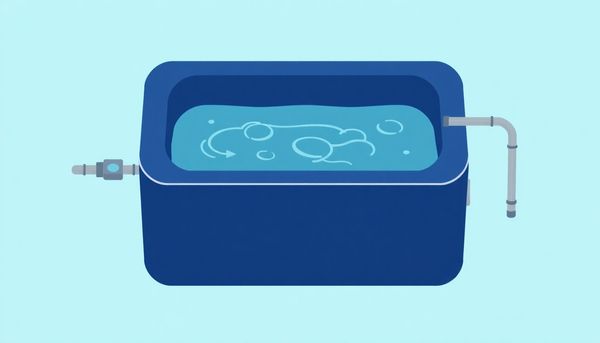
Water flow concerns in a hot tub can swiftly turn a relaxing evening into a puzzling chore. When the jets don't perform their aquatic magic, it might feel like your spa is stuck in a stubborn standstill. Before frustration bubbles over, let’s explore what might be blocking that flow.
A common culprit is the filter. Over time, it's bound to collect debris, slowing down water circulation. Examine it for any visible signs of dirt or damage. A quick rinse might suffice, but sometimes a replacement is the wisest choice. This simple check can often restore optimal water movement and bring your jets back to life.
Water level plays a crucial role in maintaining a steady flow. If it's not at the recommended level, your pump might struggle to pull water through the system. Topping off the water occasionally might solve the issue and restore the vigorous jet action you crave.
Meanwhile, if the pump remains silent, it’s time to investigate further. A multimeter can confirm whether it's receiving power. If the pump has power but refuses to run, it might be time for a repair or replacement. Don’t hesitate to call in a professional if electrical tinkering isn't your forte.
For those who recently refilled their hot tub, an airlock might be to blame. Air trapped in the plumbing can hinder water flow, making your jets seem lifeless. Bleed the system by loosening the bleed screws on the pump to release the trapped air gently. Hearing a hiss followed by smooth water flow means victory.
Remember, a little regular maintenance can keep these water flow woes at bay, ensuring your hot tub remains an oasis of relaxation rather than a source of stress.
Nobody wants to end a stressful day by finding their hot tub is inoperable. The warm water and soothing jets are a siren call that can be silenced by something as simple as a clogged filter or blocked lines. Keeping these components clean isn't just about maintaining the hot tub’s efficiency, it's about ensuring your oasis is always ready when you need it.
Start by turning off the hot tub. Safety first, right? Removing the filter is usually a straightforward task, but if it feels stuck, check for any locks or catches holding it in place. Once out, inspect the filter for grime and buildup. A garden hose can work wonders here. Spray between the pleats to dislodge trapped debris, or for a deeper clean, let it soak in a filter cleaning solution overnight. If the filter looks worn or damaged, it’s time for a replacement.
While the filter is soaking, look at the circulation lines. A simple flush using water pressure might clear minor clogs. If not, a plumbing snake can be your best friend. Just be gentle—nobody wants to replace a damaged line.
I remember once neglecting my own hot tub maintenance, only to find a family of spiders had made a home in the filter. A thorough cleaning restored my tub to its former glory, and I learned to regularly inspect and clean these crucial components. It's a small investment of time that ensures your hot tub remains your personal retreat.
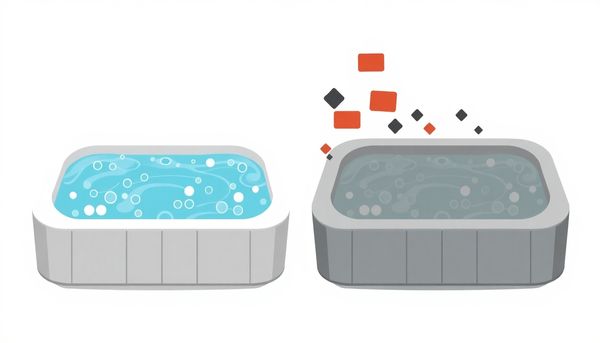
This article provided insights into maintaining your pool. Start your pool care journey today!
Want to become a pool maintenance expert? Our free Pool School course covers everything you need to know about pool care. From basic maintenance to advanced troubleshooting, you'll learn how to:
Join over 10,000 pool owners who have already transformed their pool care routine. Get started with our free Pool School course today!